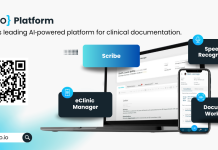Marc Hoogstad, Head of Product Management at Finworks, discusses how real-time data can support government decision-making and the benefits of establishing coordinated and robust data management practices
Effective data management is a top priority for governments as it plays a key role in unlocking the value of data. Governments require access to high- quality real-time data for effective decision-making, responsive governance, efficient resource allocation, and ensuring the wellbeing of their citizens. Real-time data provides crucial insights into various aspects of society and the economy, enabling governments to address challenges promptly and make informed policy choices.
Paul Willmott, Executive Chair, Central Digital and Data Office in the Roadmap for digital and data, 2022 to 2025, states that “It’s only possible to make effective decisions, meet customer needs and respond to new challenges and opportunities when you have modern technology, real-time access to high-quality data, a cadre of skilled digital talent and the right conditions for innovation to thrive.”
Governments are among the world’s largest producers and largest users of data as they aim to deliver better and more efficient public services. However, maximising the potential of public sector data requires robust frameworks governing data collection, storage, and use to ensure data privacy and security.
Data management reduces data silos
Data are typically dispersed across a fragmented landscape of datasets used by government entities for a specific purpose, often managed in organisational silos. Data are routinely stored in formats that are hard to process or access.
The consequence is that data are not available where needed, progress on digital government is inhibited, and citizens have little transparency on what data the government stores about them or how it is used.
Coordinated and robust data management practices are essential to reap benefits for government:
- High-quality policymaking that is evidence-based and guided by the targeted analysis of data sets from across a variety of agencies, allowing for well-coordinated approaches to social, economic, and administrative issues. An example of cross-government eligibility is prescription eligibility, which enables pharmacies to check entitlement to free prescriptions with DWP data in real-time.
- Harmonised internal data systems can be centrally coordinated across agencies to reduce duplicated labour and inefficiencies. Data platforms promote interoperability at a whole-of-government level, which can be managed holistically in accordance with international best practices regarding format, security, and other factors.
Moving to the Cloud
Government decision-making can be made more effective by embracing the use of cloud technology. Moving to the cloud allows effective use of real-time data to monitor the effectiveness of government interventions and provide early insight of where and when more action needs to be taken.
To act, the government can use cloud technology to have flexible methods to harness data and develop a single source of intelligence to reduce incomplete or inconsistent data, which can slow decision-making at critical times. The cloud can reduce processing times, and operations can scale easily with need.
By moving to the cloud, government bodies can collect and share real-time operational data across locations and departments more efficiently and ensure that everyone is using the same information to inform their actions. Data analytics and dashboard creation consolidate and present real-time data in ways that encourage action.
Benefits of real-time data
Evidence-based policymaking constructed on rigorous analysis of data sets has become a baseline capability of effective government agencies and projects. As citizens increasingly interface with private sector digital services, they expect more seamless, secure, and anticipatory digital services that governments create and maintain. Some of the benefits of real-time data are:
-
Real-time data is essential for emergency response and public safety.
During natural disasters or accidents, governments need up-to-the-minute information to coordinate emergency services, allocate resources, and ensure the safety of citizens. Real-time data also aids in monitoring and managing public health crises, allowing authorities to track the spread of diseases, allocate medical resources, and implement timely interventions.
-
Real-time data supports efficient resource allocation and service delivery.
Governments use real-time data to monitor public services, infrastructure, and public transportation. The data ensures that resources are distributed where they are most needed. For instance, real-time data on traffic patterns can help optimise traffic flow and reduce congestion, leading to smoother transportation networks and reduced environmental impact.
-
Real-time data enhances regulatory oversight and compliance.
Governments rely on real-time data to monitor various sectors, such as finance, healthcare, and environmental protection, to ensure that regulations are followed and potential risks are identified early. Real-time data on economic indicators, trade volumes, and market trends helps governments make informed economic policies, stimulate growth, and respond to economic fluctuations.
-
Real-time data mitigates risks and reinforces law enforcement and security.
Real-time data can also aid in law enforcement efforts by providing immediate insights into criminal activities, helping authorities respond swiftly to maintain public safety. Governments can use real-time data to manage traffic flow, monitor congestion, and optimise transportation systems.
-
Real-time data promotes transparency and effective resource allocation.
Governments can allocate resources more efficiently by using real-time data to monitor public services, track expenditures, and identify areas in need of additional support. Transparency allows access to current information on government activities, budgets, and public services, which fosters accountability and trust between citizens and the government. For example, the UK Office of National Statistics (ONS) has started using retailer point-of-sale data and web scraping techniques to get more timely information about inflation. The data provides insights that can be used to protect the most vulnerable citizens as prices rise.
Embracing data
While many governments around the world have acknowledged the importance and value of leveraging data, they still face the challenge of matching their existing infrastructure and systems with the growing demand for data management frameworks.
Developing holistic data management practices is possible through the Finworks Data Platform. The integration of real-time data practices has heightened the ability to swiftly respond to challenges, make informed decisions, and engage citizens in meaningful ways. Embracing transformational data strategies empowers governments to navigate an ever-changing world with agility and precision, leading to better outcomes for the government and its citizens.

This work is licensed under Creative Commons Attribution-NonCommercial-NoDerivatives 4.0 International.











